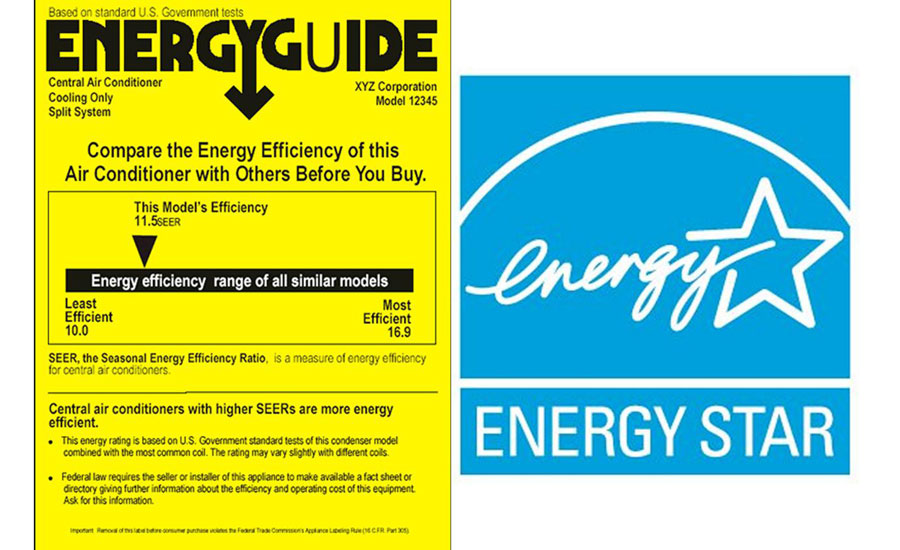Heating & Cooling
Selecting a Heat Pump
When selecting a heat pump look for ones that are ENERGY STAR® rated and have a yellow Energy Guide Label. Heat Pumps that have the ENERGY STAR rating are those units with Seasonal Energy Efficiency Ratios (SEER) of 14 or greater and Heating Season Performance Factor (HSPF) of 8.2 or greater. The energy guide label features the heat pump’s heating and cooling efficiency performance rating, and compares it to other available makes and models.
Heating Efficiency
Heating efficiency for air-source electric heat pumps are indicated by the HSPF. The HSPF is a ratio of the seasonal heating output in Btu divided by the seasonal power consumption in watts. The HSPF rates both the efficiency of the compressor and the electric-resistance elements. The most efficient heat pumps have an HSPF of between 8 and 10.
Cooling Efficiency
Cooling efficiency is indicated by the SEER. The SEER rates a heat pump’s cooling efficiency. The SEER is the ratio of the seasonal heat removed in Btu per hour to the seasonal power consumption in watts. In general, the higher the SEER, the higher the cost. However, the energy savings can return the higher initial investment several times during the heat pump’s life. The most efficient heat pumps have SEERs of between 14 and 18.


How a Heat Pump works
An electric heat pump can heat your home during the winter and cool it during the summer. The major parts of a heat pump include:
- Compressor: This increases the pressure of the refrigerant so that it will accept the maximum amount of heat from the air.
- Condenser: Coils that move heat to or from the outside air.
- Evaporator: Coils that move heat to or from the air inside the home.
- Air handler: Fan that blows the air into the ducts of the home. Components 1, 2, 3 and 4 are found in all standard air conditioners.
- Reversing valve: Changes the heat pump from air conditioning to heating, and vice versa. This is not part of the thermostat.
Geothermal Heat Pumps
Geothermal heat pumps are similar to ordinary heat pumps, but use the ground instead of outside air to provide heating, air conditioning and, in most cases, hot water. Because they use the earth’s natural heat, they are among the most efficient and comfortable heating and cooling technologies currently available.
Earning the ENERGY STAR means products meet strict energy efficiency guidelines set by the US Environmental Protection Agency and the Department of Energy.
ENERGY STAR qualified geothermal heat pumps use about 30% less energy than a standard heat pump. They are quieter than conventional systems. By choosing ENERGY STAR and taking steps to optimize the performance of your heating and cooling equipment, while enhancing the comfort of your home.
You may also be interested to know these products can be more expensive to purchase up front, the cost difference will be paid back over time through lower energy bills. When buying new equipment, sizing and installation are as important as product quality.
To learn more about geothermal heat pumps log onto:

